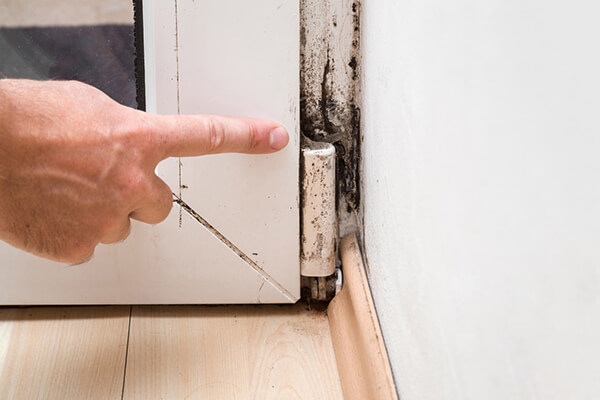Making Sure Post Remediation Verification Precision
Making Sure Post Remediation Verification Precision
Blog Article
Your Ultimate Overview to Article Mold Remediation Methods
Browsing the realm of post-mold removal strategies is a meticulous process that demands interest to information and an extensive understanding of the ins and outs included. In the results of mold and mildew problem, understanding exactly how to efficiently get rid of the mold and mildew and avoid its reoccurrence is vital for keeping a healthy and balanced interior atmosphere. From choosing the ideal cleaning and sanitizing techniques to applying methods for lasting mold prevention, each action in the removal journey plays a crucial role in guaranteeing a successful outcome. As we get started on this exploration of post-mold removal methods, we will certainly uncover the vital approaches and best techniques that can assist you restore your space to its pre-mold problem and protect it against future mold and mildew hazards.
Comprehending Post-Mold Removal Process
After finishing the mold remediation procedure, it is critical to comprehend the post-mold remediation strategies that are required to guarantee a extensive and efficient cleanup. Once the mold and mildew has actually been removed, the following step entails cleaning and decontaminating the impacted areas to protect against any kind of regrowth of mold and mildew.
Additionally, conducting a final examination post-remediation is essential to guarantee that all mold has been successfully eliminated. This evaluation needs to entail a detailed aesthetic check as well as potentially air tasting to confirm the lack of mold and mildew spores airborne. Added remediation might be necessary if the evaluation reveals any remaining mold. Lastly, educating residents on safety nets such as controlling wetness levels and promptly addressing any kind of water leaks can aid keep a mold-free atmosphere.
Reliable Cleansing and Sanitizing Methods

Stopping Future Mold And Mildew Growth

Importance of Appropriate Ventilation
Correct ventilation plays an essential duty in preventing wetness build-up, a key variable in mold and mildew growth within interior settings. Effective ventilation systems aid eliminate excess moisture from the air, reducing the possibilities of mold spores discovering the moisture they require to spread out and germinate. Without appropriate ventilation, indoor rooms can become a reproduction ground for mold and mildew, bring about potential wellness dangers and architectural damages.
By ensuring proper air circulation, ventilation systems can likewise assist in drying damp locations quicker after water damage or flooding cases, even more deterring mold growth. Post Remediation Inspection near me. In spaces like washrooms, cellars, attic rooms, and kitchen areas where dampness levels have a tendency to be greater, installing and preserving efficient air flow systems is important in go to website avoiding mold invasions

Monitoring and Maintenance Tips
Provided the vital function that appropriate ventilation plays in preventing mold growth, it is essential to develop efficient surveillance and upkeep tips to make certain the ongoing performance of ventilation systems. Normal assessments of ventilation systems need to be carried out to look for any kind of indicators of obstructions, leaks, or breakdowns that might impede correct air flow. Surveillance moisture levels within the building is additionally crucial, as high moisture can add to mold and mildew development. Mounting a hygrometer can aid track humidity levels and sharp home owners to any kind of spikes that may need focus. In addition, making certain that air filters are frequently cleaned or changed is essential for maintaining the effectiveness of the air flow system. Applying a timetable for regular upkeep tasks, such as air duct cleaning and heating and cooling system evaluations, can aid stop problems prior to they escalate. By staying positive and conscientious to the problem of air flow systems, residential property owners can successfully mitigate the danger of mold and mildew regrowth and keep a healthy indoor atmosphere.
Conclusion
Finally, post-mold removal methods are necessary for guaranteeing a like it clean and risk-free atmosphere. Comprehending the process, executing effective cleansing and sanitizing approaches, preventing future mold development, keeping proper ventilation, and regular monitoring are all vital steps in the remediation procedure. By complying with these guidelines, you can effectively remove mold and avoid its return, working or promoting a healthy living area for all residents.
In the aftermath of mold invasion, understanding how to effectively remove the mold and mildew and prevent its reoccurrence is paramount for maintaining a healthy and balanced interior environment. When the mold has actually been removed, the next step includes cleaning and sanitizing the affected locations to stop any regrowth of mold and mildew - After mold remediation. After getting rid of visible mold growth, it is vital to cleanse all surface areas in the affected area to get rid of any kind of staying mold and mildew spores. To better enhance mold and mildew prevention actions, it is crucial to deal with underlying concerns that at first led to mold and mildew advancement.Provided the critical role that proper air flow plays in stopping mold and mildew growth, it is important to develop efficient monitoring and maintenance ideas to ensure the ongoing performance of air flow systems
Report this page